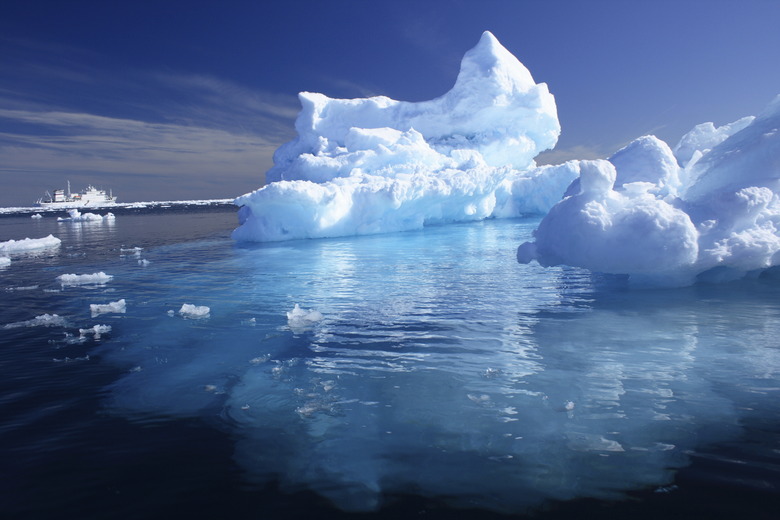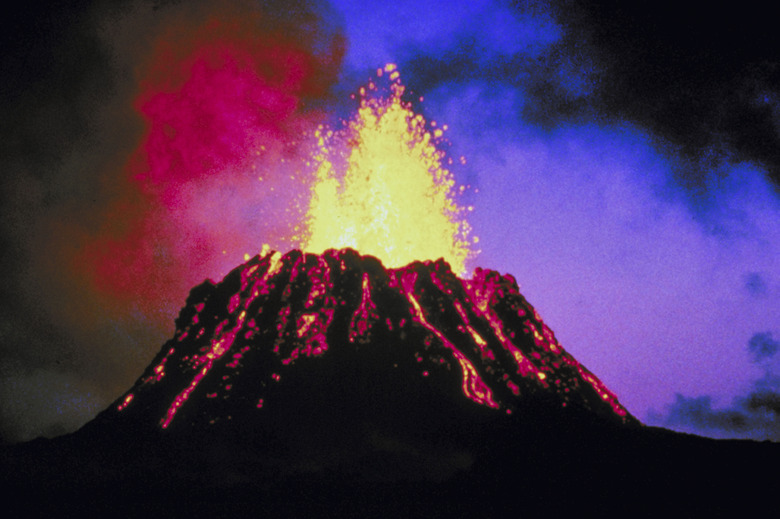The Solid, Liquid & Gas Phases Of Matter
Materials have a solid, liquid and gas form. Each of these forms is known as a phase of matter. In each of its phases the particles of a substance behave very differently. A substance can change from one phase to another through what is known as a phase transition. These phase transitions are mainly the result of temperature changes.
Solid
Solid
When a material is in its solid phase, molecules are bound together tightly. The shape and volume of a solid is usually fixed. The forces that attract particles to one another are particularly strong in solids, keeping them close together in specific positions. This helps to prevent a solid from breaking apart or being compressed. The density of solid material increases at lower temperatures. The colder the temperature, the weaker the vibrations of particles, making them pack together even tighter. Solids can be classified as crystalline, with particles arranged tightly in geometric patterns, or they may be classed as amorphous solids. The crystals in amorphous solids, such as clay, are arranged more loosely and randomly, allowing the shape of the material to be altered.
Liquid
Liquid
In its liquid phase, the particles that make up a substance have more freedom of movement. This movement is achieved through the particles gaining thermal energy. The shape of a liquid is determined by the shape of its container. Although the particles in a liquid are not bound together as tightly as those in a solid, liquid substances cannot be compressed. Liquid particles are more energetic than solid particles and can move around but only within a certain distance from other particles. There is still a force of attraction holding them together loosely. Because particles are further apart in a liquid, the volume of a substance in its liquid phase is greater than its volume in a solid phase.
Gas
Gas
The shape and volume of a gas is determined by the shape and volume of its container. However, unlike a solid, a gas will escape if there is no lid on its container. The particles in a gas have a great deal of freedom of movement and do not have an ordered arrangement. This is because the forces that attract these particles to each other are weak or absent in the gas phase. Gas particles have a great deal of kinetic energy, which is continually passed around between particles as they move around and bump into each other.
Transition
Transition
Phase transitions take place due to changes in temperature, although they are also influenced by atmospheric pressure. A solid becomes a liquid when it is heated to its melting point, where heat gives the particles enough energy to loosen their structure and become a liquid. At boiling point, heat gives particles in a liquid enough energy for those on the surface of a liquid to escape the structure and vaporize, moving into the air as a gas. Low atmospheric pressure allows liquids to boil at a lower temperature. For gas to become a liquid, it must cool enough for particles to lose energy and condense; forming bonds tight enough to hold a liquid form. For a liquid to become a solid, it must freeze so that particles have very little energy and are drawn together by very tight bonds.
Cite This Article
MLA
Ames, Hayley. "The Solid, Liquid & Gas Phases Of Matter" sciencing.com, https://www.sciencing.com/solid-liquid-gas-phases-matter-8408542/. 24 April 2017.
APA
Ames, Hayley. (2017, April 24). The Solid, Liquid & Gas Phases Of Matter. sciencing.com. Retrieved from https://www.sciencing.com/solid-liquid-gas-phases-matter-8408542/
Chicago
Ames, Hayley. The Solid, Liquid & Gas Phases Of Matter last modified March 24, 2022. https://www.sciencing.com/solid-liquid-gas-phases-matter-8408542/



